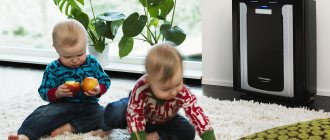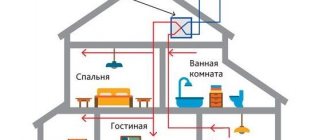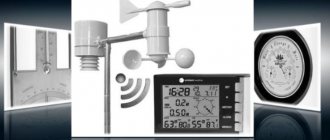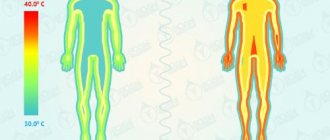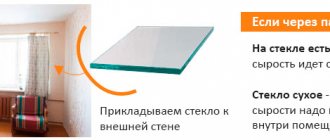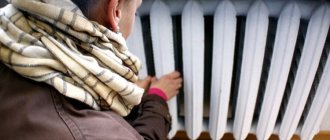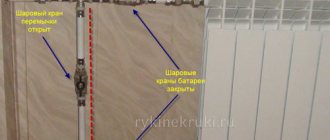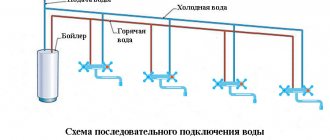SHARE ON SOCIAL NETWORKS
FacebookTwitterOkGoogle+PinterestVk
The article examines in detail such a concept as air humidity in an apartment: the norm of this indicator for residential premises for various purposes, prescribed by GOST, the consequences for humans that arise as a result of deviations from the norm in one direction or the other. The text describes alternative methods for measuring moisture levels and instruments designed for this, as well as recommendations for maintaining optimal climatic conditions.
The microclimate in the apartment - temperature and humidity - affects health and well-being.
The need for air humidification
Maintaining optimal humidity in the room is necessary not only for the sake of small children. The health of adults also worsens in dry air conditions. The condition of hair, skin and general performance of a person depends on the level of humidity.
Maintaining the required moisture content in the apartment has a beneficial effect on the health of all family members. If there is a lack of moisture in the room, the following may develop:
- Allergic attacks. Dry air contains many dust particles that do not settle down, but fly around the room. This condition harms people suffering from bronchial asthma.
- Sleep disturbance. A healthy night's rest is possible only with cool and humidified air.
- Dry mucous membranes. They trap all harmful bacteria and microorganisms, acting as a barrier between the human body and the environment. Dry membranes facilitate the penetration of pathogenic bacteria into the body.
- The occurrence of friction when wearing lenses. In this case, it is extremely important to moisturize the mucous membranes so as not to injure them.
Allergies are a common symptom of dry air in the room.
Women look less attractive due to brittle hair and premature aging of the skin. In a stuffy room, the human body is forced to expel more fluid to cool and maintain vital functions.
If these parameters are not observed, interior items also become very dry: floors creak, furniture becomes deformed. But over-humidification of the air leads to dampness. It is no less harmful to health than dryness.
In this video you will learn how dry air is harmful:
Level adjustment methods
Knowing what the humidity in the apartment should be and what numbers your hygrometer (or other measuring device) shows, you can adjust its level yourself or with the help of humidifiers-dehumidifiers.
For dry air
Lack of moisture in the environment negatively affects human health:
- immunity is weakened;
- the risk of asthma attacks and various allergic reactions increases;
- the condition of the skin, nails, and hair ends worsens;
- mucous membranes become dry;
- Headaches, drowsiness, and concentration may deteriorate.

You can increase the percentage using any household humidifier or simple folk methods: by installing bowls of water or an aquarium, hanging wet towels and linen, regular wet cleaning, and others. A non-trivial solution would be to purchase hydrogel balls, fountains or special containers for radiators.
If you decide to open the windows in winter to ventilate, keep in mind that this will not make the air more humid; such a temperature difference, on the contrary, will reduce the percentage of moisture. In case of rainy and warm weather, frequent ventilation will really help, exactly how much depends on the temperature outside and in the house.
By the way, if immediately after installing the humidifier you did not feel significant changes, wait a week - perhaps the air was too dry and the finishing materials of the ceiling, walls and wooden furniture were the first to absorb the moisture.
Methods for determining humidity levels
A hygrometer is a device designed specifically to maintain optimal humidity parameters in a room. Its task is to determine the amount of water vapor in the house. Install the device away from radiators and moisture-forming resources - kitchens and bathrooms. If these conditions are not met, the results obtained will be incorrect.
Different types of premises have their own humidity parameters. They are calculated based on the frequency of stay of family members in each room and are consistent with the physiological characteristics of the body. Normal air humidity should be:
- in the children's room - up to 70%;
- in the bedroom for adults - up to 70%;
- in the living room - up to 60%.

This is due to the fact that the child has narrow nasal passages, so the mucous membrane dries out quickly . He spends most of his time in the nursery. In the bedroom, people get complete rest, as a result of which the body must replenish the lack of oxygen and moisture. Residents of the house use the living room much less, so there are no strict requirements for it.
Not everyone can afford to install a hygrometer at home. It is quite possible to carry out an approximate moisture analysis using traditional methods. To do this you will need a bowl filled with water. It is put in the refrigerator for several hours. After the time has passed, they take it out and place it in the center of the room. When there is a temperature difference, condensation forms on the vessel.
Indicators are assessed based on the results seen. If the air is dry, the walls of the dishes will also dry out. If the humidity is normal, condensation drops will drain slowly. High humidity will result in the formation of a puddle under a container of water.
Based on these indicators, conclusions should be drawn: dry air needs to be humidified, and excessively humid air needs to be dried with special electrical appliances. Otherwise, this condition threatens the development of mold and mildew.
Insufficient room heating
In apartments with an individual heating system, the problem of high humidity may arise due to insufficient heat levels. This can happen due to:
Recent posts Soldering or crimping electrical wires Chopped houses: technical features and advantages Interior in Scandinavian style
- Incorrect boiler settings and insufficient temperature settings (before starting to operate the equipment, be sure to consult a specialist);
- Installation of additional panels on radiators (in order to improve the aesthetic characteristics of devices or protect children from hot surfaces);
- A thick layer of paint on the batteries (formed as a result of repeatedly painting the device).
Also, the reason why it is humid in the apartment may be the “amateur action” of the neighbors, who decided to remove some of the pipes to reduce costs.
Solution to the problem : check the functionality of the heating system, configure the equipment correctly, remove all additional panels from the radiators, and before painting the batteries (if necessary), be sure to remove the previous layer of dye from the surface of the equipment.
Relative humidity according to GOST
Microclimate parameters in living rooms are specified in GOST 30494-2011. They are classified into optimal and acceptable.
An optimal microclimate is one in which the human body is able to maintain a normal thermal state without undue stress on the thermoregulatory mechanisms. With an optimal microclimate, about 80% of people in the room feel comfortable. But the remaining 20% will be uncomfortable.
With acceptable microclimate parameters, the body’s thermoregulation mechanisms are strained, which is why a person’s well-being worsens, he feels discomfort, but without harm to health.
Let us clarify that these standards were developed for builders and organizations servicing residential buildings (housing offices, homeowners' associations, etc.). Therefore, microclimate parameters are indicated in relation to the cold and warm periods of the year. That is, builders must build houses so that they maintain heat and humidity at an acceptable level, and service organizations ensure sufficient heat supply in winter.
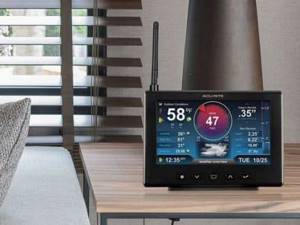
To obtain data on the humidity level, a hygrometer is enough, but all microclimate parameters are important for health; a home weather station will help you control them
But interrelated indicators of temperature and relative air humidity are important for the human body, regardless of the time of year. What they should be is shown in the table.
| Optimal air temperature | Optimal relative humidity | Maximum permissible relative humidity |
| 20-22 °C | 45-30% | no more than 60% |
| 22-25 °C | 60-30% | no more than 65% |
As you can see, the range of parameters is very wide and when the temperature rises by only 2-3 °C, the upper limit of optimal humidity immediately “jumps” up. It is clear that, despite the standards, an increase or decrease in humidity by 1.5-2 times at a constant temperature will affect well-being.
Even when approaching the lower limit of normal, the air is perceived by many as too dry. If the temperature outside remains −20 °C or lower for a long period, then the relative humidity in apartments drops below the maximum level and can reach 5-7%.
Availability of sources of additional moisture
They can serve as:
- Leaking plumbing or pipes. The solution is to check, repair or replace everything you can.
- Flowers. Tropical plants that require frequent watering should be removed from the apartment, giving preference to unpretentious species that will not evaporate a lot of moisture.
- Aquariums in the apartment. If the humidity problem is serious, you will have to give up this hobby and remove the aquarium.
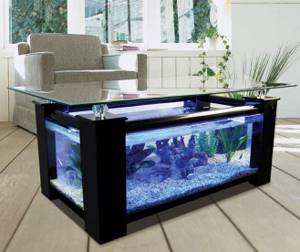
- Large amount of water on the lower floor. This could be a basement, a swimming pool, etc. It’s difficult to do anything here; appeals to the housing office with a request to improve the microclimate of the basement are ineffective, and you can’t get rid of the pool, all that remains is to change your place of residence or install a powerful dehumidifier in the apartment.
- Unscrupulous upstairs neighbors who periodically flood your apartment or have leaking taps. The last factor makes your pipes “sweat” and “cry”. The resulting condensation increases the humidity in the apartment. You can get rid of the problem by calling a mechanic from the housing and communal services; in extreme cases, you can resort to using polyurethane casings by wrapping them around a wet pipe.
USEFUL INFORMATION: Features of the construction of a Russian bath
Why is dry air harmful to humans?
Muconasal secretion, secreted by the mucous membranes of the nasal cavity, acts as a barrier to the penetration of viruses and bacteria dangerous to humans into the body.
With a lack of humidity in the air, the mucous membranes dry out, and a lack of secretion occurs, which contributes to infection with influenza and other infectious diseases. A runny nose, sneezing, and coughing appear. Due to dryness and tension, microcracks form on the mucous membranes, which can become foci of purulent infections.

Dry air negatively affects the mucous membranes, the internal nasal cavity suffers, lips crack, general malaise occurs, and the risk of ARVI increases.
Being in a room with low humidity causes tears to dry out quickly. The surface of the eyes is not cleaned or moistened properly. Itching and redness appear. People who work at a computer or wear contact lenses are most affected.
Dry air affects not only the mucous membranes, but also the skin. Dry skin is more prone to allergic reactions and dermatoses. General well-being also worsens, a person gets tired faster and perceives information worse.
Young children are most sensitive to dry air. Doctors recommend maintaining relative humidity in the nursery at a level of at least 45-50%.
How to determine whether the air is dry or not?
The easiest way to control the microclimate is with the help of instruments: a thermometer, hygrometer or home weather station. You can also use improvised means.
Fill the glass with water and place in the refrigerator to cool to 3-5 °C. Remove the glass of cold water and place it on a table or other surface that is convenient for observation.
After 10 minutes, assess the condition of the condensation on the outer wall of the glass. Small drops of water on the fogged wall indicate normal humidity. Large drops flowing down the wall indicate high humidity. If there is no condensation, the outside of the glass is dry - the humidity is low.
What is the optimal air humidity in an apartment for a comfortable life?
Life and comfort completely depend on the level of humidity in the air in your home. People care about the temperature of the air mass, often forgetting about humidity indicators. But it is on them that the overall well-being, the body’s sensation of heat or cold, depends. Also the condition of house plants, furniture and belongings.
Important The average level of air humidity in an apartment should be 40-60%. This indicator may vary depending on the weather and time of year, as well as the type of operating conditions of the premises.
Why the wrong choice of housing shortens our lifespan
If the indicator differs greatly from the established norms, then the consequences primarily affect health. Pets, just like people, suffer from excess or lack of moisture.
Microclimate depending on the type of premises, percentage.
- For children's 45-60;
- Adult bedroom 40-50;
- Kitchen and bathroom 40-60;
- Living room or dining room 40-60;
- Office 30-40.
Due to the frequent use of water in the bathroom and kitchen, the indicators in them are overestimated, this is considered the norm. However, excessive moisture in these rooms should not be allowed. It can provoke the appearance of mold fungus and harmful bacteria. To avoid this, you need to install powerful hoods.
Optimal temperature
The optimal temperature in residential premises, as well as humidity, is established by the interstate standard GOST R 51617–2000. According to this document, the temperature in the bedroom, living room and corridor should fluctuate between 20°C and 22°C. The upper threshold for a living room is 24°C. In the bathroom, GOST sets the standard at 25°C, in the toilet - 18°C, as well as in utility rooms (pantry, drying room). For the kitchen the value is set at 19–21°C.
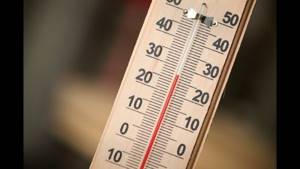
Air temperature is an important component of the microclimate of an apartment
In the hot season, the temperature in the apartment should rise by 1–2°C, no more. The maximum permissible room temperature in summer is 25°C.
Temperature in the nursery
The microclimate in a children's room is somewhat different from ordinary living quarters, because a child, being active and mobile, needs a cooler environment. Moreover, the temperature in the nursery greatly depends on the age of the child. So, the baby needs warmer air - 23–24°C. Children from three years old feel more comfortable in cool temperatures - 18–19°C. Then, as the child grows up, the temperature is adjusted to the “adult” value of 20–22°C.

Correctly set temperature in the children's room is the key to good health and good sleep for the child.
An excessively high temperature in the nursery forces the child’s body to regulate its heat exchange using sweat glands. As a result, the baby becomes sweaty, and diaper rash and redness may form. Moreover, losing a significant amount of moisture through sweat, the child begins to suffer from dehydration - this leads to pain, problems with digestion of food, as well as diseases of the oral cavity caused by insufficient saliva production.
Bedroom temperature
The air in the bedroom should not be too warm - no more than 21°C, ideally 19°C. You've probably noticed that it's almost impossible to fall asleep in a hot room. Because of this, many people ventilate their bedrooms before bed—temporarily lowering the temperature to help them drift off more peacefully. Unfortunately, from the point of view of microclimate regulation, this measure is not entirely correct.
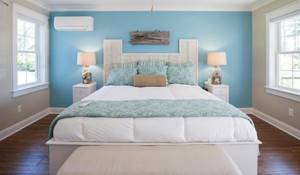
Cool air in the bedroom helps you sleep more soundly
The coolness in the bedroom must be maintained not only at the moment of falling asleep, but also throughout the entire duration of sleep, so simply ventilating the room is not enough. Of course, it never hurts to freshen the air before bed, but if late at night the temperature in the bedroom rises again to 22–24 ° C, sleep will be restless, and in the morning you will wake up completely exhausted.
Another reason to keep your bedroom temperature lower is to look good. In a cool environment, our body releases melatonin better during sleep. This substance helps fight aging, smooths out age-related wrinkles and improves the color and tone of the facial skin.

Cool air in the bedroom helps maintain youthful skin
Kitchen temperature
The microclimate of the kitchen greatly depends on the appliances installed in it and the intensity of their use. The optimal temperature in this room is 19°C, but often there is no need to regularly maintain this temperature.
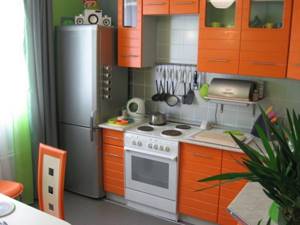
The temperature in the kitchen can vary greatly depending on the use of different appliances
The main device that affects the temperature in the kitchen is the stove. A gas burner emits more heat into the air, and therefore in a kitchen equipped with it it is worth lowering the temperature by 1 degree - the lack of heat is compensated by cooking over a fire. Active use of the oven also significantly insulates the room.
If household members hardly use a stove or oven, preferring an electric steamer or multicooker, it is worth, on the contrary, raising the temperature to 20°C - such appliances emit little heat and do not warm the air in the room.
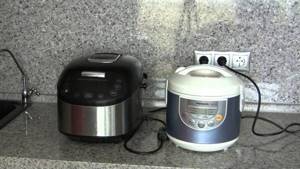
The multicooker, beloved by many housewives, has low heat transfer
Bathroom temperature
The temperature in the bathroom should not be lower than 23°C, optimally 25°C. This high rate is due to two simple reasons. Firstly, high humidity at low temperatures creates a feeling of chilly cold and unpleasant dampness, and secondly, wet skin feels the temperature even lower than it actually is.

The bathroom should be kept at a higher temperature than living rooms
To prevent mold from growing due to the combination of heat and humidity, be sure to ventilate the bathroom after taking a shower or other water procedures. Leave the door open for at least half an hour - this prevention is usually enough to prevent the development of fungus on the walls.
Deviations from the norm
Reducing the air temperature in the apartment below the specified standards entails negative consequences:
- Risk of colds. Hypothermia very often causes unpleasant symptoms such as chills, runny nose, and sore throat.
- Reduced humidity. Cold air has less humidity than warm air.
- Constant tension in the body. If our body is not warm enough, it tends to expend energy and warm itself up. This, accordingly, reduces immunity and energy - constantly spending energy on warming up, we leave ourselves little energy for active movements.
We recommend: Connecting a heated floor - options, diagrams, step-by-step instructions
If the room is warmer than specified in the standards, this leads to the following consequences:
- Peeling of the skin. In young children it may also manifest itself in the form of dermatitis. Due to the presence of microcracks, pathogenic bacteria easily penetrate into the skin, causing inflammation.
- Drying of the mucous membrane. Warm air, even well-humidified, does not provide our mucous membranes with sufficient moisture. If you regularly breathe such air, you can dry out your nasopharynx, which will result in a sore throat and vulnerability to pathogenic bacteria and viruses.
- Digestive problems. Warm air also affects the condition of the gastrointestinal mucosa. Without producing enough mucus, our body cannot maintain proper digestion. This can cause abdominal pain and colic in young children.
- Risk of hypothermia. Oddly enough, increased temperature in the apartment can cause hypothermia. In a hot environment, our sweat glands begin to actively work, trying to cool us down. If at this time we go, for example, outside, where it is not so warm, we can easily become hypothermic and catch a cold.
What happens from dry air.
When the cold season sets in and the heating is turned on in the apartments, the air begins to dry out. Due to lack of moisture, the body loses resistance. Dry mucous membranes no longer prevent viruses and bacteria, become thinner and allow them to pass through. Static electricity spreads germs and dust mites, causing allergies. The appearance also suffers from dry hair and skin.
Effects of dry air:
- Dried and lifeless hair, dry and thin skin. The result is split ends, wrinkles and cracks in the skin. Dermatitis worsens and resistance to infections is lost.
- Feeling of dry eyes, irritation. Feeling of the presence of sand or a foreign object. The strain on the eyes increases and due to fatigue, dry eye syndrome occurs.
- Slowing down digestion. This occurs from an increase in the viscosity of intestinal and gastric juices.
- In an environment with dry air, respiratory allergens actively multiply. This is contraindicated for people with allergies, and especially asthma.
- Dizziness, headaches, general weakness and increased stress on the heart. These are consequences of blood thickening and slowing of its circulation.
- Dried mucous membranes begin to let more viruses through, and people suffer from respiratory infections more often. The thinning of the protective membrane causes nosebleeds.
Important to know Indoor plants and pets suffer from lack of sufficient air humidification. The wear life of natural wood furniture is reduced.
How to downgrade?
The causes/sources of occurrence should be established. To eliminate the causes, the following may be recommended:
- Sealing slab joints.
- Ensuring roof tightness.
- Replacement of window frames.
- Repair of plumbing, pipelines.
- Checking and cleaning ventilation ducts.
- Installation of forced ventilation in places where moisture accumulates (kitchen, bathroom, toilet).
- Frequent ventilation.
- Rare wet cleaning.
- Minimum indoor plants.
Air humidity is an important parameter of the microclimate of a home; it deserves close attention and needs constant monitoring. The result of the work is good health and excellent well-being.
Consequences of air with excess moisture
Significantly exceeding the norm of humidity in an apartment also has a large number of negative consequences. The maximum values for a living room in the summer are 65%, and during the heating period 60%. If the conditions are not met, then harmful bacteria and mold fungus appear in the apartment.
What happens when humidity levels are too high?
- Respiratory tract diseases are becoming common, which do not cure for a long time and can cause complications. Chronic diseases such as asthma are acquired. For those who already have this disease, excessively humid air threatens frequent exacerbations.
- Dampness is felt and causes unpleasant odors. The presence of stuffiness is getting worse. There is a loss of feeling of freshness in the apartment.
- Washed laundry takes longer to dry.
Excess moisture is especially harmful for people with allergies; pathogenic organisms and mold fungus have a bad effect on their health. Humidity is also harmful to plants, as it causes them to rot. Furniture and things also suffer. Wood products become deformed and cracks appear. Things in the closet acquire an unpleasant odor and turn yellow.
If there is constant condensation on the windows in the apartment, it means that the humidity in it is increased.
Organization of ventilation
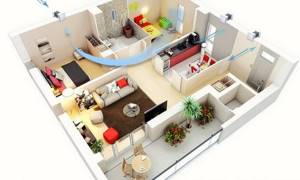
An economical way to get rid of humidity in an apartment is natural ventilation. The method is divided into unorganized and organized versions.
The first method assumes that you need to regularly open windows and doors to remove dampness. In wooden frames, flows seep through the cracks, but in metal-plastic windows there are no fresh inflows due to tightness.
Organized natural ventilation involves getting rid of damp air through a network of channels and risers, which can be built-in or mounted. The operating principle is based on pressure difference.
In an apartment, natural ventilation does not always work effectively, so it is recommended to use forced supply and removal of air flows. The system includes cleaning, temperature changes, and humidity reduction.
Air humidity level in the apartment: normal
Deviation from indoor humidity standards causes difficulty breathing, which, if prone, can develop into asthma. For hypertensive patients and people suffering from disorders of the cardiovascular system, such deviations are strictly contraindicated. Children endure such a situation extremely hard, because disturbances lead to improper formation of organs, fatigue, absent-mindedness, lethargy, sleep disturbances, and lack of appetite.
Unless we are talking about desert regions where the temperature is too high, the air masses contain water vapor in any case. The efficiency of the respiratory system of all human organs depends on their concentration. Oxygen starvation is detrimental even to normal brain function. That is why it is always necessary to ensure that the humidity in the apartment does not exceed the permissible standards established for the region.
One way to assess this indicator is to measure the amount of water in one cubic meter of air. This is absolute humidity. Relative normal humidity is calculated using the following values:
- The maximum possible amount of water per cubic meter, which depends on the temperature.
- Real concentration of liquid per cubic meter. m volume, which is absolute humidity.
In this case, the ratio of real data to the maximum possible norm, expressed as a percentage, is calculated. If, say, it turns out that a cubic meter of air contains 13 g of water (absolute humidity in the room), and the maximum possible at +24 degrees Celsius is 21.8 g, then it is easy to make a calculation. The relative humidity in the room will be 13.0 / 21.8 x 100% = 60 percent.
There is a special GOST 30494-96 that establishes normal microclimate parameters in premises intended for human habitation. According to this interstate standard, during the cold months, the permissible relative humidity varies between 30-45%. In hot weather 30-60%. If measurements and calculations indicate that in winter it is above 60, and in summer more than 65, such deviations are considered critical.
In this situation, people suffer, electrical appliances, furniture, clothing, and interior items are damaged. Even indoor plants die. Their growth stops and flowering is impossible. It is necessary to maintain the recommended air humidity in the apartment, despite the fact that builders must take into account the requirements of GOST at the design and construction stage of the building. And for this you need to make periodic measurements and take measures to stabilize the indicators.
Norm for apartments in winter
Physiologists have calculated that the optimal air humidity in an apartment all year round is in the range of 30 to 40 percent. However, from autumn to spring, people use radiator heating and additional heating devices that can dry out the air, which is extremely undesirable. Changes in temperature outside also make adjustments.
Reasons for high humidity in the apartment
Excess moisture in the air can accumulate for various reasons. For ease of understanding, we will divide them into three large groups. The first includes temporary inconveniences associated with construction or repair work. After their completion, moisture is felt in the apartment for a long time, which evaporates from the plaster and self-leveling floor.
In summer, you can open the windows. Ventilation will help dry the apartment faster, provided that the weather outside is dry. But if the repairs had to be carried out in the off-season or winter, you will have to be patient - the floors and walls will take a long time to dry. If you don't want to wait, install a dehumidifier in rooms that have undergone renovation work and the situation will change.
The second group of reasons includes internal sources of moisture. Factors that regularly saturate the air with water vapor can be:
- Condensation on windows and walls, which is formed due to temperature differences inside and outside the apartment.
- Human. When breathing alone, about 300 g of water is released per day. Another 500 g - with sweat (with minimal activity).
- Moisture-loving plants. They evaporate about 97% of the moisture that is used for irrigation.
- Rooms in which there is constant contact with moisture - bathroom, kitchen, toilet.
- Drying clothes on radiators or in the bathroom.
- Leaking plumbing in the bathroom.
- Cooking, washing dishes, cleaning.
- Large aquarium.

The third group of reasons that provoke an excess of moisture are external sources. They are the most difficult to influence, since they are related to the quality of work performed at the construction stage (waterproofing, insulation). Among them are the following:
- The apartment is located in an old building. Walls, ceilings, floors are not sufficiently sealed and insulated.
- The windows are leaky and require replacement - they allow air through poorly sealed gaps between the window frame and the wall.
- Air flows that are formed as a result of leaks in the wall structure at the junction of floors.
- Mistakes when performing waterproofing work.
It is not uncommon in apartment buildings to be flooded by neighbors above. Residents of apartments located on the first floors of multi-storey buildings may suffer from dampness due to the fact that there is constantly standing water in the basement. If the apartment is located on the top floor, the cause of dampness may be a poorly waterproofed roof.
How to get rid of dampness in an apartment in such situations? The answer is obvious - try collectively with the residents of other apartments to eliminate its causes. Otherwise, the fight against excess humidity will not give tangible results.
You can try draining the basement. To do this, you need to hire a team that will repair the water pipes and pump out the water. There are also specialists who can repair the roof. Facade insulation gives good results. Of course, such measures are expensive, but it is better to spend money on eliminating the causes than to constantly invest in fruitless attempts to eliminate the consequences.
Summarizing the above, we can say that the optimal humidity parameters will be if initially:
- the apartment building is properly designed and built;
- waterproofing of the foundation, walls and roof was carried out with high quality;
- The ventilation system is well thought out and implemented.
A common situation is that dampness is observed only during the off-season, when the central heating is not yet turned on, and it is already cool outside. The temperature in the apartment drops. As a result, humidity increases. To solve the problem, it is enough to use heating devices. You can choose a convector, oil radiator, fan heater, infrared or panel heater. Recently, many people are switching to the “Warm Floor” heating system we recommend.
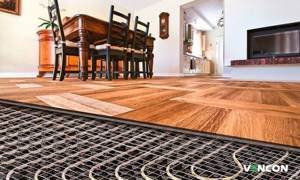
What you need to know about the airtightness of buildings?
Speaking of tightness, it is quite common to believe that the leakiness of the outer shell of a building has a beneficial effect on the microclimate in the apartment. That is, air exchange occurs through the cracks in the joints of the slabs, gaps and seams. In fact, such a statement is completely false. Poorly sealed seams will create a draft in the apartment in windy weather. If there is no wind, air exchange is disrupted and the flow of fresh air from outside stops.
The second point is that during strong gusts, precipitation can penetrate into the apartment along with the air. This is another reason for the increase in humidity levels. The argument that moist air escapes from the apartment through the gaps is also erroneous. The warm air flow, passing through the cracks, is cooled. As a result, all moisture settles in the form of condensation inside the walls. The same applies to windows - they must be installed hermetically. The gaps between window frames and slopes (inside and outside) are sources of dampness.
We suggest installing a recuperator for the apartment, because this is a more rational solution. Such devices provide proper air exchange without heat loss.
We recommend the product
Recuperator Prana 150 Eco Life 3 reviews
In stock
Heat recovery efficiency,%: 95 | Heat exchanger material: copper | Installation of external grille: from indoors | Wall module diameter, mm: 150 | Filter class: G2 | Wall thickness from, mm: 450 | Area, m²: 11-20, 21-35, 36-60, up to 10 |
Why is facade thermal insulation so important?
When it comes to thermal insulation, it is important to understand what is happening inside the walls of the building. To do this, we first explain what dew point is. This definition refers to the temperature at which water vapor contained in the air condenses into water.
Depending on the thickness of the wall, the dew point can be located outside the building, within the thickness of the wall or inside the apartment. Accordingly, the walls may be dry (if the dew point is shifted closer to the street) or covered with droplets of water (if the dew point is closer to the inner edge of the wall). The dew point can shift in one direction or another when temperature or humidity parameters change.

Dew point concept
Let's look at this issue in more detail. Let’s assume that the temperature inside the apartment is +20°C and the air humidity is 60%. This means that condensation will settle on any surface whose temperature is +12°C or lower. If the walls in the apartment do not warm up to this temperature, then moisture will constantly appear on them. This situation indicates that the walls are not insulated or not insulated enough, and in winter the problem of dampness will constantly arise.
There are situations when façade insulation work is carried out improperly. As a result, a gap remains between the insulation and the wall, through which cold air currents can penetrate and bring moisture with them. In such cases, you will also have to face the question of how to remove humidity in the apartment. If thermal engineering calculations are carried out correctly, the dew point will be inside the insulation, due to which the walls in the apartment will remain dry during the cold season.
According to the State Building Standards of Ukraine DBN B.2.6-31-2006, the thermal insulation of buildings must be carried out in compliance with the following parameters: the difference between the air temperature in the room and the temperature of the inside of the outer wall should be no more than 4°C. This is enough to prevent condensation from forming.
The thermal insulation qualities of windows are also of great importance in the fight against dampness. Taking into account the climatic characteristics of the geographical latitudes in which Ukraine is located, the optimal glazing is double-glazed windows with low-emissivity coating. The chambers must be filled with krypton or argon with a low thermal conductivity coefficient U=0.5...0.8 W/m²K or R=2.0...1.25 m²C/W.
How to measure air humidity in an apartment
Control the microclimate using a hygrometer, a device that measures the humidity in the apartment. There are several types of hygrometers:
- psychrometric - determines the value of relative humidity; to decipher the readings, you need to compare the data with a psychrometric table;
- electronic - very easy to use, data is displayed on the screen as a percentage;
- ceramic - mechanical method of action, based on identifying the level of electrical resistance under the influence of moisture;
- hair - based on the ability of human hair to change length depending on the influence of moisture;
- weight - determines the absolute humidity of the air;
- condensation - the most reliable indicators, the principle of operation is based on the analysis of the total amount of condensate.
If you don’t have a hygrometer, you can find out the information of interest using a room temperature measuring device and an Assmann table. A kind of home psychrometer. Record the room temperature readings from the thermometer, then wrap the tip with a well-wetted cloth and leave for 5 minutes. Having determined the result, calculate the difference between the readings of the dry and wet thermometer; to decipher the value, use the psychrometric table.

If it happens that you don’t have a room thermometer at hand, and you don’t know how to measure humidity, folk methods will come to the rescue. Naturally, these methods will not provide accurate data on the moisture level in the apartment, but they can indicate an increased or decreased microclimate.
- Fill a glass with cold running water and place in the refrigerator for 3 hours. After the specified time has passed, remove the glass and place it in a room away from heat sources. To start the experiment, you should wait 5 minutes, then evaluate the result.
| reduced | average | increased |
| the walls are dry | the walls remained foggy | drops flow down the walls in streams |
- You need a piece of plywood and a spruce branch, the length of which is 30 cm. Fasten the cut to a plywood sheet, mark the place where the loose end ends. Under the influence of moisture, it will change its position; it is necessary to record changes on the sheet daily, checking the readings of the hydrometeorological center. This way you will learn how to determine readings on a homemade moisture meter.
- For the third method you will need a fir cone. Take the pine cone and place it away from heat sources. Under the influence of high air humidity, the scales of the cone will press against each other. And if there is not enough moisture, they will open.
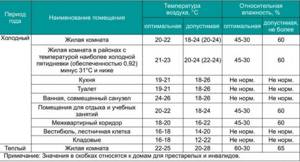
Table: humidity standards in different rooms
Measuring instruments
Hygrometer. It helps to find out exactly whether the air humidity in the apartment is normal or whether it needs to be increased/lowered. There are many types of hygrometers, differing in accuracy and measurement method. The most commonly used are hair, electronic, and psychrometric.
Microclimate control system. Such modern devices allow you to find out not only the percentage of water, but also other parameters. For example, the MagicAir base station additionally provides information on temperature and carbon dioxide levels, and also helps maintain set ideal values by automatically controlling connected climate control equipment.
If you don’t want to buy a special device in a store, try traditional methods:
- pay attention to the rate of evaporation of droplets from the walls of a glass or other container removed from the refrigerator. At a high level, after 5 minutes a puddle will form under the bottom; at a low level, the walls will be almost dry;
- watch the fir cone. Bring it home and place it away from heating appliances, flower pots and the stove; if after a week the scales close, there is a lot of moisture; if they open, the house is drier than it should be.
How to increase air humidity with household appliances
The most affordable and popular device for increasing humidity in the air is a household humidifier. It can be used all year round, but it will be especially useful in winter, when indoor humidity of 20 percent causes discomfort.
The following types of humidifiers are available:
- Classic. The operating principle of such devices is based on the evaporation of cold water without preheating. Water flows from a special container onto the evaporator - disk, filter or cartridge. Due to the fact that such devices take air from the room and release it after cleaning with a filter, additional removal of dust and allergens occurs.
- Humidifiers with air purification function. These are full-fledged climate control devices that simultaneously increase the level of humidity and purify the air by equipping them with special replaceable filters. They are also called air washers.
- Steam models. The operating principle of such devices is similar to the operation of an electric kettle. Heating elements with a ceramic plate or coil release steam after preheating the water. It is optimal to use both in summer and to maintain humidity levels in the apartment in winter.
- Ultrasonic. The most expensive and effective. The liquid poured into the reservoir flows onto a plate that vibrates under the influence of ultrasound. The water breaks up into tiny droplets, which enter the room through a cooler inside the case.
Humidifier with cleaning function (air washing) Steam humidifier Ultrasonic humidifier
What affects humidity?
The main factor is air temperature. As this indicator decreases, the moisture content decreases. As the temperature rises, the amount of moisture in the air also increases.
Reduce moisture levels:
- Heating appliances.
- Air conditioner.
- Pillows, upholstered furniture, toys, carpets.
- Ventilation of housing in frosty weather.
Increase moisture content:
- House plants.
- Aquarium.
- Drying clothes in the apartment.
- Boiling the kettle frequently.
- Leaking pipelines, broken plumbing.
Poor quality of repairs, defects in construction.
- Roof leaking.
- Leaks in the joints of building slabs.
- Old, leaky window frames.
- Obstruction of air flow through ventilation ducts.
The moisture content values are sought to be as close as possible to the maximum permissible range.
How to increase air humidity using folk remedies
Air humidity in a dry room can be increased using traditional methods:
- regular wet cleaning;
- frequent ventilation (not in sub-zero temperatures), especially after rain;
- installation of a mini fountain, aquarium or other water containers;
- growing flowers and watering them regularly;
- reducing the intensity of heating radiators using wet towels;
- using a spray bottle.

Folk remedies to increase the humidity in the room
To increase the humidity in the room, you can dry clothes directly indoors, rather than on the balcony or street. When cooking food, water vapor from boiling pots also enters the air.
What is air humidity
The air contains water vapor. Whether it is dry or wet depends on its quantity. Air humidity is measured as a percentage.
The weather forecast always indicates air humidity. It depends on how a person feels on the street. When it’s hot and raining, the humidity is almost 100%, so you get a feeling of stuffiness. With strong wind and humidity less than 30%, there is a feeling of dryness in the mouth, throat, and nose.
Air types and humidity:
- very humid air - above 85%;
- moderately humid air - 70-85%;
- moderately dry air - 55-70%;
- dry air - 30-55%;
- very dry air - below 30%.
In the Sahara Desert, air humidity is 20-30%
How to reduce humidity
High humidity is not always a good thing. If mold, mildew appears on the walls, or condensation constantly collects, it must be reduced. You can use one of these methods:
- Dehumidifiers. Special devices absorb excess water molecules, taking air from the room. The principle of operation of such a device is based on the condensation of steam in the room. The air conditioner performs part of the functions of a dehumidifier - it also takes water from the air.
- Good ventilation. Clogged air ducts do not cope with the function of removing excess wet air from the apartment.
- Drying clothes outside or on the balcony. When drying, the fabrics release water molecules into the air, which circulates throughout all rooms and increases humidity.
- Sunlight. When it enters a room, it causes water to evaporate, so it is recommended to open windows regularly.
Some factors that increase humidity cannot be influenced:
- the more people live in an apartment, the lower this figure will be;
- if all the windows face north, the rooms most often have dampness;
- In some cities, climatic conditions determine constant high humidity.
Failure of double glazed windows
Like ventilation systems, window structures fail over time. This is especially true for seals installed on the inside of the frame. The degree of protection that a double-glazed window provides largely depends on it. In this case, the reason why the apartment is very humid can be explained by the natural wear and tear of the seal. To check its current status you need to:
- Open window;
- Press the rubber seal with your finger.
If the compacting layer quickly returned to its original position, it means it is still performing its working functions. If the rubber retains a dent or does not bend at all under pressure, it’s time to change it.
Solution to the problem : replace the glass seal (by contacting a specialist in the appropriate direction).
Simple ways to humidify the air without using a humidifier
There is absolutely no need to purchase expensive appliances to improve indoor air quality. This can be done easily in simple, safe and inexpensive ways.
The best indoor plants that help normalize the microclimate
Flowers evaporate moisture naturally during their life. There are several plants that significantly increase indoor humidity.

First of all, these are fast-growing tropical specimens, as well as swamp species:
- Dieffenbachia has wide leaves that evaporate moisture well.
- Cyperus marsh plant. It must have water in its tray, which is why Cyperus is one of the leaders among humidifier plants.
- Tradescantia grows quickly, loves watering and, accordingly, evaporates a lot of moisture itself.
- Chlorophytum is a plant that is often used to improve the microclimate in an apartment. It grows quickly and needs regular watering.
- Ferns - despite the fact that they themselves need moist air, they have a beneficial effect on the microclimate.

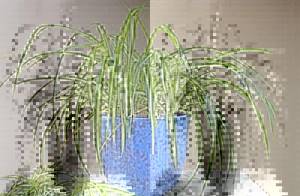
In addition to the evaporation of moisture from the surface of the leaves, plants need spraying to avoid drying out the leaves, which also has a beneficial effect on increasing the humidity in the room.
Flowers and containers with them can be lined with moss or decorative stones, which are regularly moistened.
Water containers
It is necessary to place wide containers of water around the room; basins are best suited for this. For faster evaporation, they are installed next to radiators; in addition, in these places the air is always drier. In summer, containers are installed in places where there is active exposure to sunlight, so moisture evaporates faster. You can place saucers on the windowsills; this is also beneficial for indoor flowers. It is useful to place containers with water near the bed with the child, so it will be easier for him to breathe during sleep.

In order for the water to evaporate faster, it can be heated. However, make sure there are no children or animals nearby. Basins should not interfere with free movement in space. If there are small children and animals at home, then this method is not always convenient and safe. In this case, the containers are taken small and installed in inaccessible places. Instead of wide basins, three-liter jars are suitable. Since bacteria develop in them over time, the containers must be washed and the water in them promptly changed.

You can boil water for some time, while keeping the door to the kitchen open so that the fumes penetrate into other rooms.
Bathroom as a source of moisture
The humidity in the bathroom is high, especially after taking a shower. To slightly increase the humidity level in the room, you need to keep the door to the bathroom open.

You can turn on hot water specifically for a while.
Regular wet cleaning and ventilation
Frequent wet cleaning in the apartment will help increase the humidity level. It consists of wiping dust off furniture, washing floors, but you don’t have to wring out the rag too much, since the water still evaporates quickly.
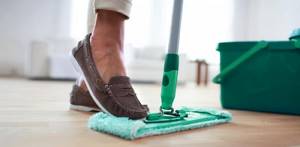
The use of a washing vacuum cleaner has a beneficial effect on increasing humidity.
Rugs soaked in water take longer to dry than smooth floors. You can leave a damp cloth at the entrance.
At any time of the year, you must remember to ventilate the room. This saturates not only with oxygen, reduces the concentration of harmful substances, but also increases the level of humidity. Ventilation has a beneficial effect on creating a comfortable indoor microclimate.
Manufacturers have come up with a special device - an air washer - it removes dust from the atmosphere and at the same time improves the atmosphere.
Home fountain
Household appliances, souvenir, and gardening stores sell decorations that are used not only to decorate the interior, but also to increase the humidity in the room. These are beautiful home fountains of various shapes. They are a housing within which water circulates in the form of a stream. In order for it to work correctly, it is necessary to promptly monitor the fluid level.
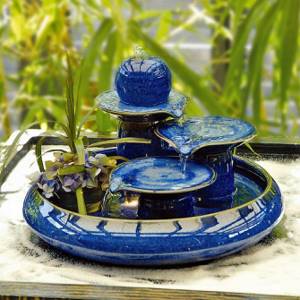
In addition to fountains, special humidifiers are sold that actively evaporate moisture.
Humidity control in a children's room
An equally important indicator from the point of view of ensuring the health of a newborn baby is air humidity. With the beginning of the heating season, most residential buildings experience a decrease in the percentage of moisture in the air. You can determine humidity levels using a special device - a hygrometer, which is recommended for young parents to purchase.

If the air is excessively dry, the solution to the problem is a household humidifier. In addition to humidifying properties, this device purifies room air from dust particles and pathogens. If it is not possible to purchase a humidifier, the following tips will help increase the humidity level in the room:
- It is recommended to hang cotton or gauze towels soaked in water on hot central heating radiators;
- You can place containers of water around the crib;
- To increase the percentage of moisture in the air, install an open aquarium next to the crib.
Young parents need to remember that conditions that are comfortable for an adult body are not optimal for the body of a newborn child. It is recommended to prepare conditions for maintaining a newborn child even before the baby is born. Every young family should have a thermometer for measuring air temperature, a hygrometer, and a household humidifier.
When creating greenhouse conditions for a newborn child, parents need to remember that excessive care leads to an increased risk of developing infectious pathologies.
Simple homemade air humidifier
You can make your own air humidifier from scrap materials. It will work in winter, as it will require a heating source. To make a humidifier, take an ordinary plastic bottle. A wide hole and several small ones are cut out on the side. A rope is threaded through the small ones. The device is hung on the heating radiator, and water is poured inside. The principle of operation is simple: there is dry and hot air next to the battery, which helps the water evaporate quickly.
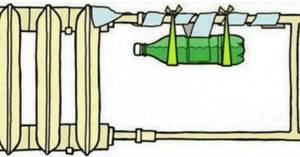
It is easy to assemble an electric humidifier with your own hands. To do this, you will need a container of water and an aquarium compressor; the simplest and cheapest one will do. When aerating water, the device increases the rate of evaporation.
Another option is to use a large plastic bottle and a computer fan. The neck is cut so that the fan can be secured. Small holes are cut just below for air outlet. Water is poured so that it does not reach the fan. Turn on the device. The device must be kept out of the reach of animals and children.

Another way, also using batteries, is to hang wet towels on them. The fabric will dry out quickly, so you will have to moisten it regularly.

Thus, increasing the air humidity in a room without the help of a humidifier is a real and feasible task. In addition to the above measures, you can install an aquarium indoors without a lid with active aeration.
How to increase?
Ways to increase humidity for a short time:
- A wet sheet on the radiator.
- A container of water near heating devices.
- Intentionally boiling a kettle to create steam.
- Decorative fountain.
For permanent increase:
- Containers, vases with flowers, sea pebbles filled with water.
- Growing indoor flowers.
- Aquarium with fish/exotic algae.
- Frequent wet cleaning.
- Ventilation.
- Using an electric humidifier.
It is important not to exceed the permissible values.

